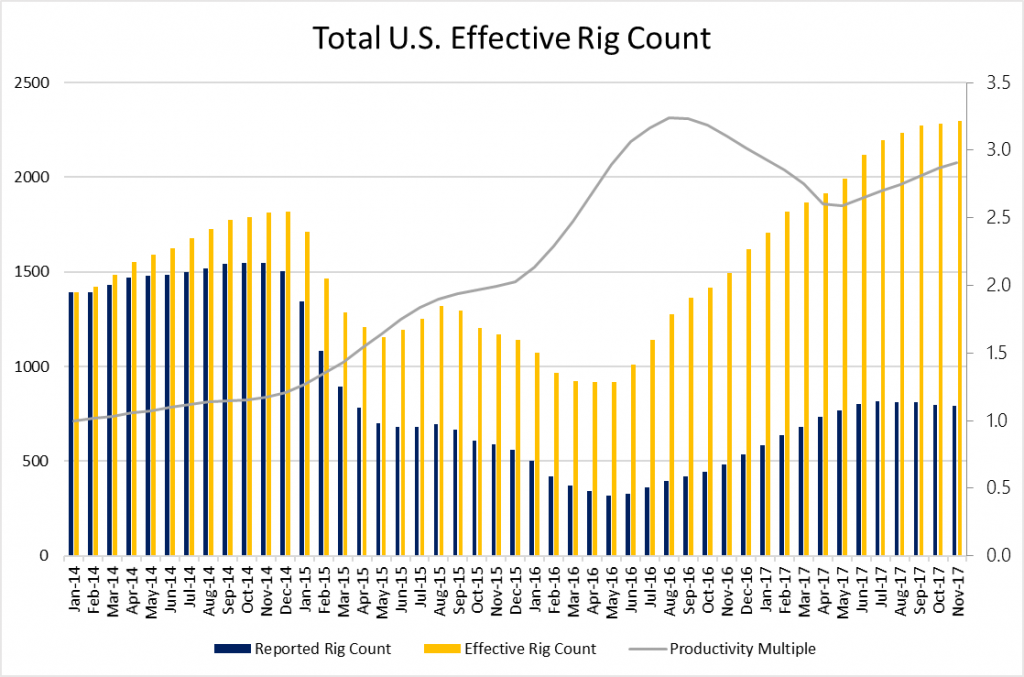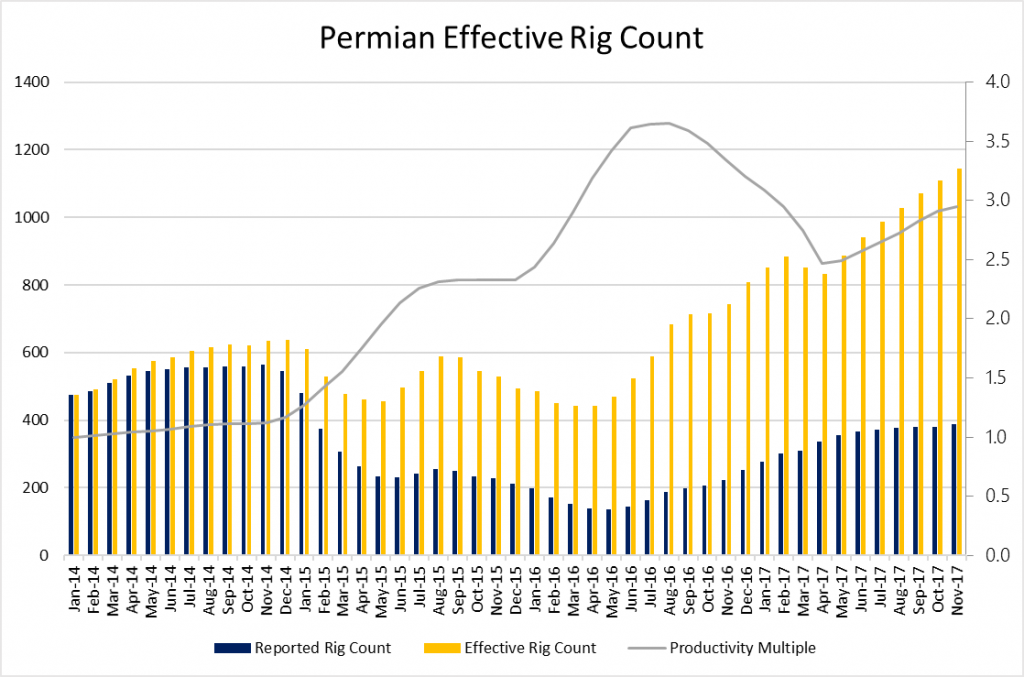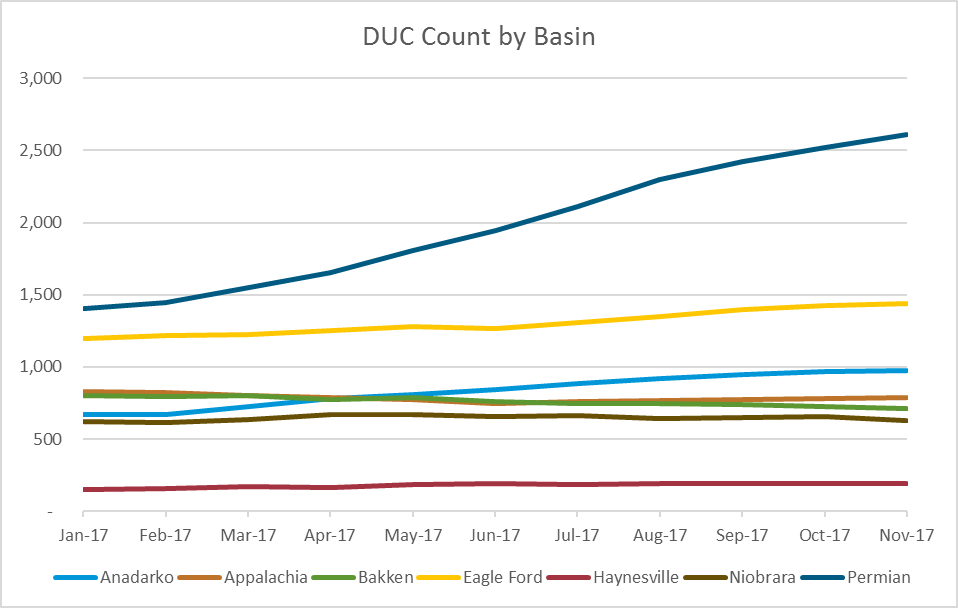Efficiencies increasing once again
EnerCom has released the latest Effective Rig Count, examining the state of drilling activity in major shale basins.
The Effective Rig Count rose in November, growing to 2,298, up from 2,284 the prior month. The number of active rigs dropped, but efficiency gains outweighed these decreases.
The average drilling operation is now 2.9 times more productive than the average rig in January 2014. Improving efficiencies and techniques have allowed companies to do a lot more with less, and producing volumes show it.
Efficiency peaked in mid-2016, when companies were still struggling with historically low commodity prices. As oil prices rebounded, activity rebounded, with companies resuming intensive drilling operations.
This rapid rebound in activity led to a decrease in efficiency. Why? Because completions work has not kept up with drilling pace. Without completions, there is no measured production from use of the rig.
Permian accounts for half of all effective rigs
The Permian now has an Effective Rig Count of 1,144, or nearly half of the total U.S. Effective Rig Count. Operations in the Permian peaked in efficiency in 2016, then fell as activity ramped up, following the overall U.S. trend. However, the shortage of completions crews seen in the beginning of the year is clearing, and efficiency is now increasing as a result.
Big gains in Bakken and Niobrara
Operations have been most-improved in the Bakken, where new rigs are yielding nearly 3.6 times as much production as they were in January 2014. Significant gains have also been apparent in the Niobrara, which is producing 3.3 times more per-rig than in 2014.
Production up by 221 MBOEPD in January
The EIA predicts that the major shale basins will grow by 221 MBOEPD from December to January, higher than the 210 MBOEPD growth seen from November to December. As might be expected, the Permian dominates oil growth, adding 68 MBOPD. Appalachia, the Permian and the Haynesville account for the vast majority of additional natural gas production, as the other four major basins added only 10% of the overall growth from December to January. Gas production in the Anadarko basin is actually predicted to decrease by 10 MMcf/d in the coming month, the only drop in production among the major basins.
DUC count growth slowing
The number of drilled uncompleted wells rose once again, but not as quickly as in previous months. There are an estimated 7,354 DUCs in the country, 94 more than last month. From March to October, by contrast, the DUC count increased by an average of 192 each month. The Permian added 96 DUCs, and now has 2,613 drilled uncompleted wells in the basin. Completions actually outpaced drilling in two major basins, the Niobrara and Bakken. These two plays saw DUC count decrease by a total of 34, the largest drop from a pair of basins since June. The Niobrara and the Bakken are the only two basins where DUC count has not seen a significant increase this year. DUCS have held roughly flat in the Niobrara, and have actually dropped by 80 in the Bakken.





